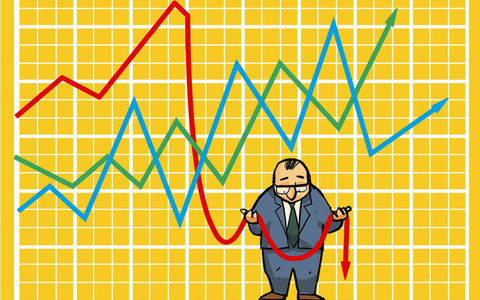Individual investors dominate stock market in 2022
Individual investors dominate stock market in 2022
Nearly 190,000 new individual investor accounts were opened in December 2021, bringing the total number of accounts opened last year to approximately 1.5 million.
Illustrative photo. |
Just five years ago the total number of accounts opened by individual investors were only around 1.18 million. The large amounts of capital pouring into the stock market currently is forecast to increase in coming time.
Lure of profit
The strong growth of the stock market in the midst of the ongoing Covid-19 pandemic, and long periods of social distancing, along with the reduction of other investment channels such as lotteries, are the main reasons new investors are seen rushing to the stock market. There is immense motivation among young new investors, but more importantly, the popularity of the stock market has also increased, as both the print and social media awareness about securities have reached young people who are now overly enthused into entering a profit making world.
In Vietnam, there are no statistics or barriers on the age of new investors joining the stock market during the Covid-19 pandemic phase, from 2020 onwards. However, statistics in Taiwan show that the number of young investors aged 25 to below 40 increased from about 25% to over 36% in 2020, and now overtaking the Taiwan stock market. In particular, people under the age of 30 who opened new accounts in 2020 were about 42%. Globally, the new wave of investors is also associated with convenient investment tools, and the highlight is the phenomenon of Robin Hood software suddenly having millions of downloads and users in early 2020.
The phenomenon of opening securities accounts in Vietnam is not associated with convenient trading software but has its own unique mark in technology. Typically, eKYC is a method of identifying customers online, without the need to meet and compare paper documents directly like traditional ones. Investors can open an account online anytime, anywhere, and instantly in a few minutes. On the other hand, the forms of transaction have also improved a lot, from placing orders directly at the counter in 2007 and earlier, to placing orders online by computer and now using trading software on mobile platforms in 2022. Adaptation is the biggest advantage for young investors and technology is a generation gap that is difficult to overcome.
Not only that, but with the increasing number of young people with financial ability and knowledge, the priority of investment channels with high knowledge content is also different from the past. Real estate is not for short-term investors. Gold is considered as an investment channel for the elderly, just like now Facebook is labeled a tool of the old and TikTok is the latest fashion trend for young people. Securities is a channel that has a high level of grey matter and is not too limited in terms of capital for testing. Any new investor with a few tens to hundreds of millions of dong can participate. At the same time, the ability to connect between bank accounts and securities investment accounts has become much more convenient.
Securities attract investors
The booming wave of new investors, and young investors on the Vietnamese stock market is now common. Mr. Michael Kokalari, chief economist for VinaCapital, says this boom had appeared in Taiwan before. The number of people with personal securities trading accounts in Vietnam is only about 3% of the population, equivalent to the percentage of Taiwanese people who had personal securities trading accounts in 1986. Setting the target to increase the proportion of people participating in the stock market to 5% by 2025 and 10% by 2030, is similar to the process of entering the market of individual investors in Taiwan during a similar period of economic development.
A Fiin Group statistic shows that in 2021, domestic individual investors have net bought separately through order matching up to nearly VND 93,079 bn equivalent to more than USD 4 bn. On the other hand, foreign investors had a record net selling year in HoSE with about VND 58,000 bn, 3.8 times higher than in 2020. If only counting the matching transactions, the net selling foreign capital flow was nearly VND 73,000 bn. Domestic investment organizations, excluding proprietary trading, also net sold over VND 30,400 bn. These numbers are placed side by side, showing a contrasting picture but demonstrating the strength of new capital inflow from individual investors.
It is difficult for young investors to cover such a huge capital scale, so the foundation of personal capital flow still has to be based on structural factors. This is the strong growth prospect of the stock market when the economy recovers from the pandemic. Along with that, the low interest rate pushes the demand for higher profitability, and inflation pressure is not too great. During the boom periods of Vietnam's stock market, there has never been a convergence of these two factors.
According to the latest data of the State Bank of Vietnam, by the end of October 2021, the savings deposit balance of residents at credit institutions only increased by 3.08% compared to the end of 2020. This growth rate is very low compared to the growth of the deposit balance of people at credit institutions in the past ten years. The significantly slow deposit growth rate is not good news for banks. This shows that the low deposit interest rate is encouraging people to withdraw money from their savings accounts and look for a place with higher profit. This trend will continue, at least until deposit rates increase.
























